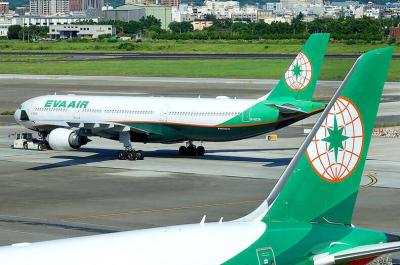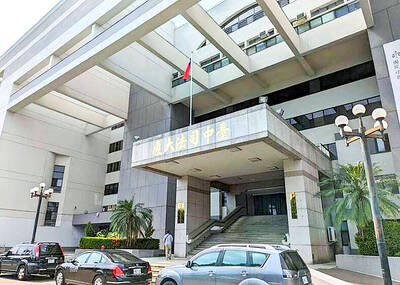The Taiwan Water Preservation Union yesterday demanded that action be taken after it said Formosa Petrochemical’s naphtha cracker in Yunlin County’s Mailiao Township (麥寮) had emitted volatile organic compounds (VOCs) 90 times higher than the legal limit.
The union made the statement at a protest at the Environmental Protection Administration (EPA), which is scheduled to convene a second meeting to assess health risks caused by air pollution from the plant.
Union spokesperson Chen Jiau-hua (陳椒樺) said the law limits emission of VOCs to 4,302 tonnes per year, but their statistics showed that emissions had reached more 390,000 tonnes.
Chen said the health risk assessment report presented by the plant had underestimated VOC emissions in several categories. The emission of benzene, which can cause cancer, exceeded 20,000 tonnes.
Some residents of Yunlin County say that there has been an increase in the number of patients suffering from leukemia and other types of cancer ever since the construction of the first coal-powered plant in Yunlin in 1997.
The EPA said the Yunlin County Government had previously ordered the plant and related facilities to halt operations because of pollution released in a number of incidents.
“Since the order to stop operations was given by the county government, the union should present their evidence to the county government so that they can determine if and when operations can resume,” the EPA said.
“We ask the union to be clear where their battlefield should be,” it said.
Meanwhile, members of the Environmental Impact Assessment (EIA) committee reviewing a health risk assessment ruled that they would hold a meeting with experts to clarify how to calculate VOC emissions.
The ruling said that the meeting would be attended by EIA members, specialists recommended by Formosa Petrochemical and experts representing environmental groups.
They would review the plant’s VOC emissions between 2009 and 2011 and decide when a third review meeting on the health risk assessment should be held after they reach a consensus on a valid method to calculate VOC emissions.
A number of fires at the plant since 2011 have triggered concerns over the facility’s safety record and the amount of pollution that it generates.
Additional reporting by staff writer

EVA Airways today confirmed the death of a flight attendant on Saturday upon their return to Taiwan and said an internal investigation has been launched, as criticism mounted over a social media post accusing the airline of failing to offer sufficient employee protections. According to the post, the flight attendant complained of feeling sick on board a flight, but was unable to take sick leave or access medical care. The crew member allegedly did not receive assistance from the chief purser, who failed to heed their requests for medical attention or call an ambulance once the flight landed, the post said. As sick

A drunk woman was sexually assaulted inside a crowded concourse of Taipei Railway Station on Thursday last week before a foreign tourist notified police, leading to calls for better education on bystander intervention and review of security infrastructure. The man, surnamed Chiu (邱), was taken into custody on charges of sexual assault, taking advantage of the woman’s condition and public indecency. Police discovered that Chiu was a fugitive with prior convictions for vehicle theft. He has been taken into custody and is to complete his unserved six-month sentence, police said. On Thursday last week, Chiu was seen wearing a white

The Taichung District Court yesterday confirmed its final ruling that the marriage between teenage heir Lai (賴) and a man surnamed Hsia (夏) was legally invalid, preventing Hsia from inheriting Lai’s NT$500 million (US$16.37 million) estate. The court confirmed that Hsia chose not to appeal the civil judgement after the court handed down its ruling in June, making the decision final. In the June ruling, the court said that Lai, 18, and Hsia, 26, showed “no mutual admiration before the marriage” and that their interactions were “distant and unfamiliar.” The judge concluded that the couple lacked the “true intention of

EVA Airways, one of the leading international carriers in Taiwan, yesterday said that it was investigating reports that a cabin crew manager had ignored the condition of a sick flight attendant, who died on Saturday. The airline made the statement in response to a post circulating on social media that said that the flight attendant on an outbound flight was feeling sick and notified the cabin crew manager. Although the flight attendant grew increasingly ill on the return flight, the manager did not contact Medlink — a system that connects the aircraft to doctors on the ground for treatment advice during medical